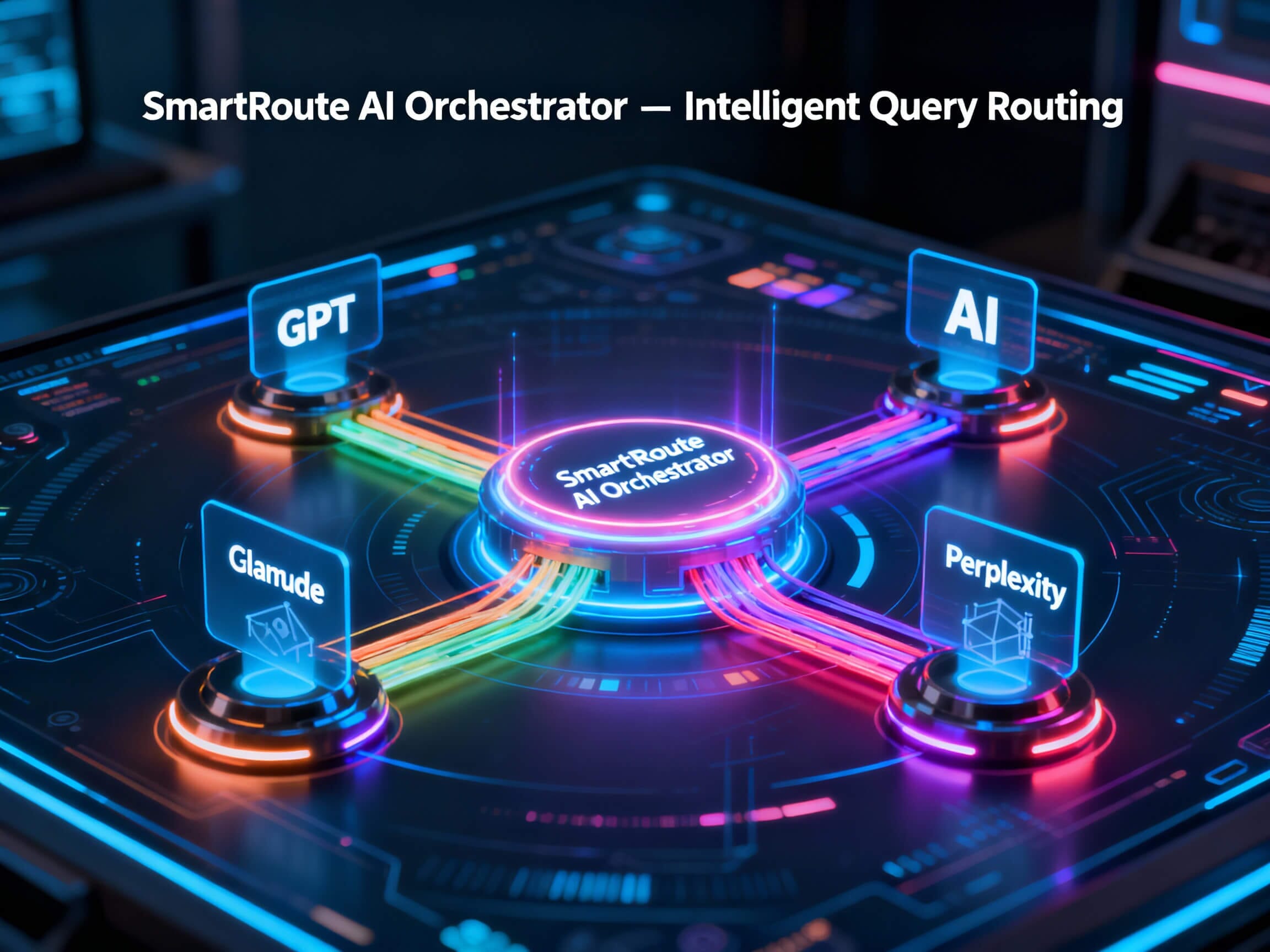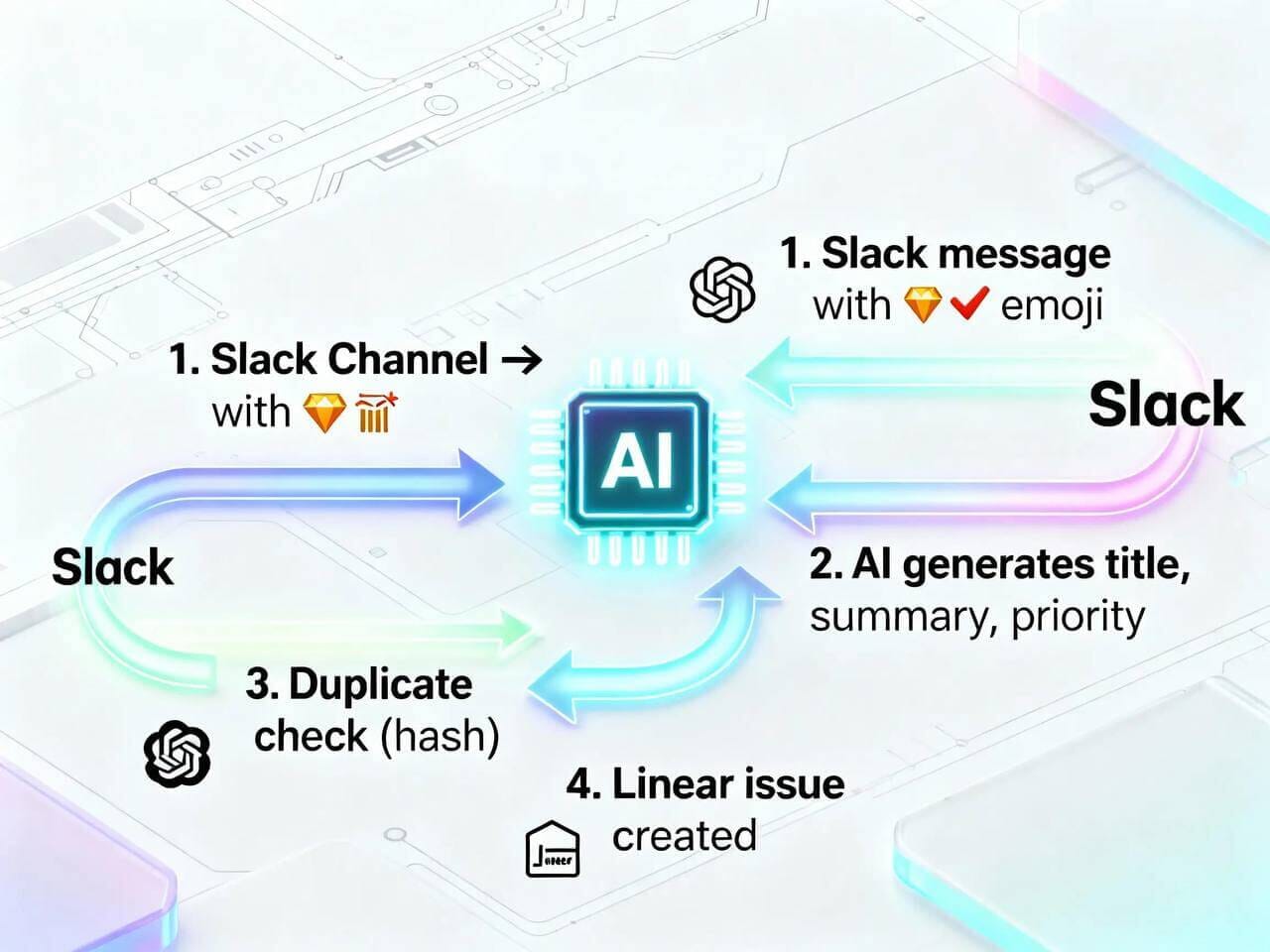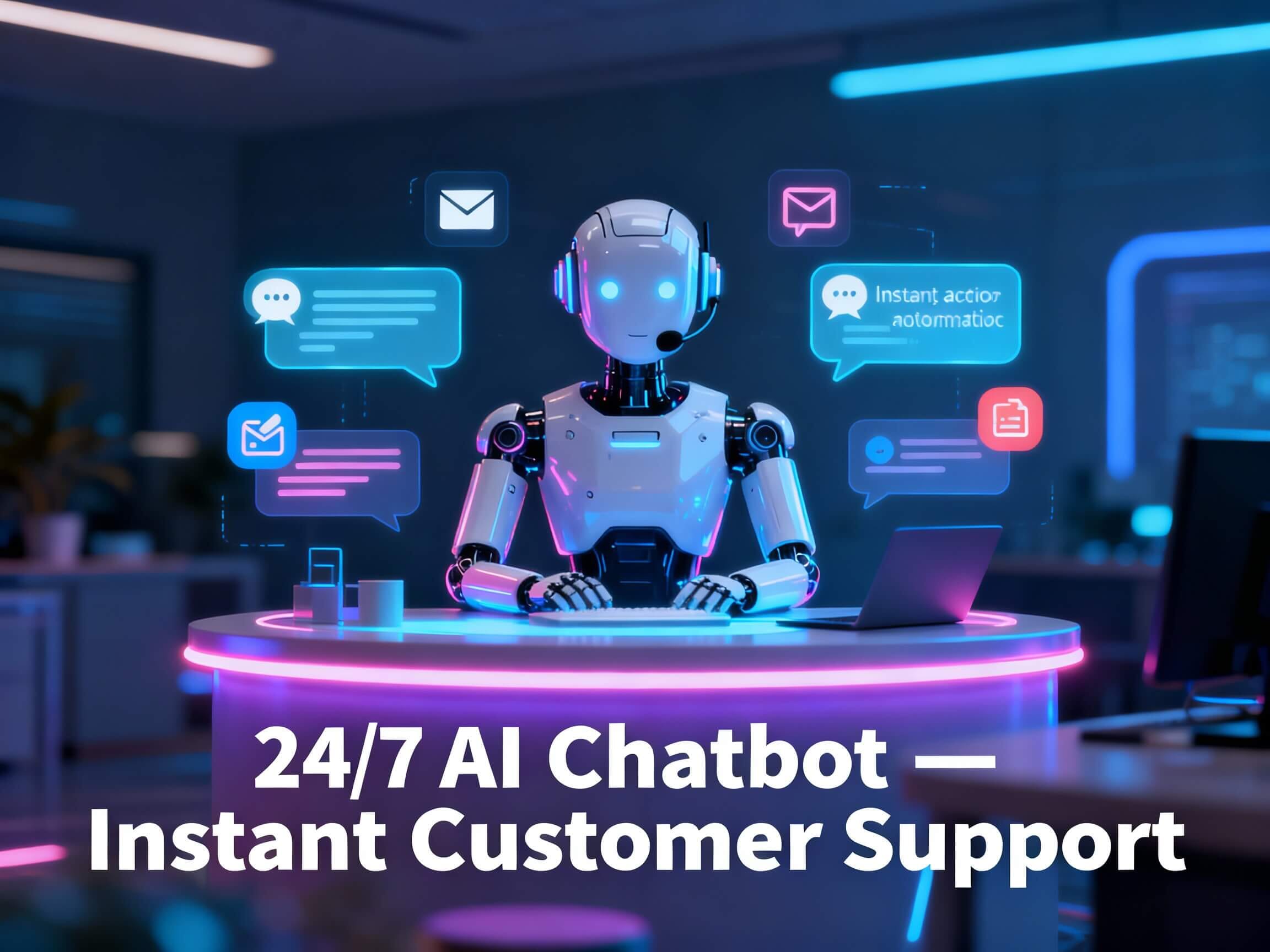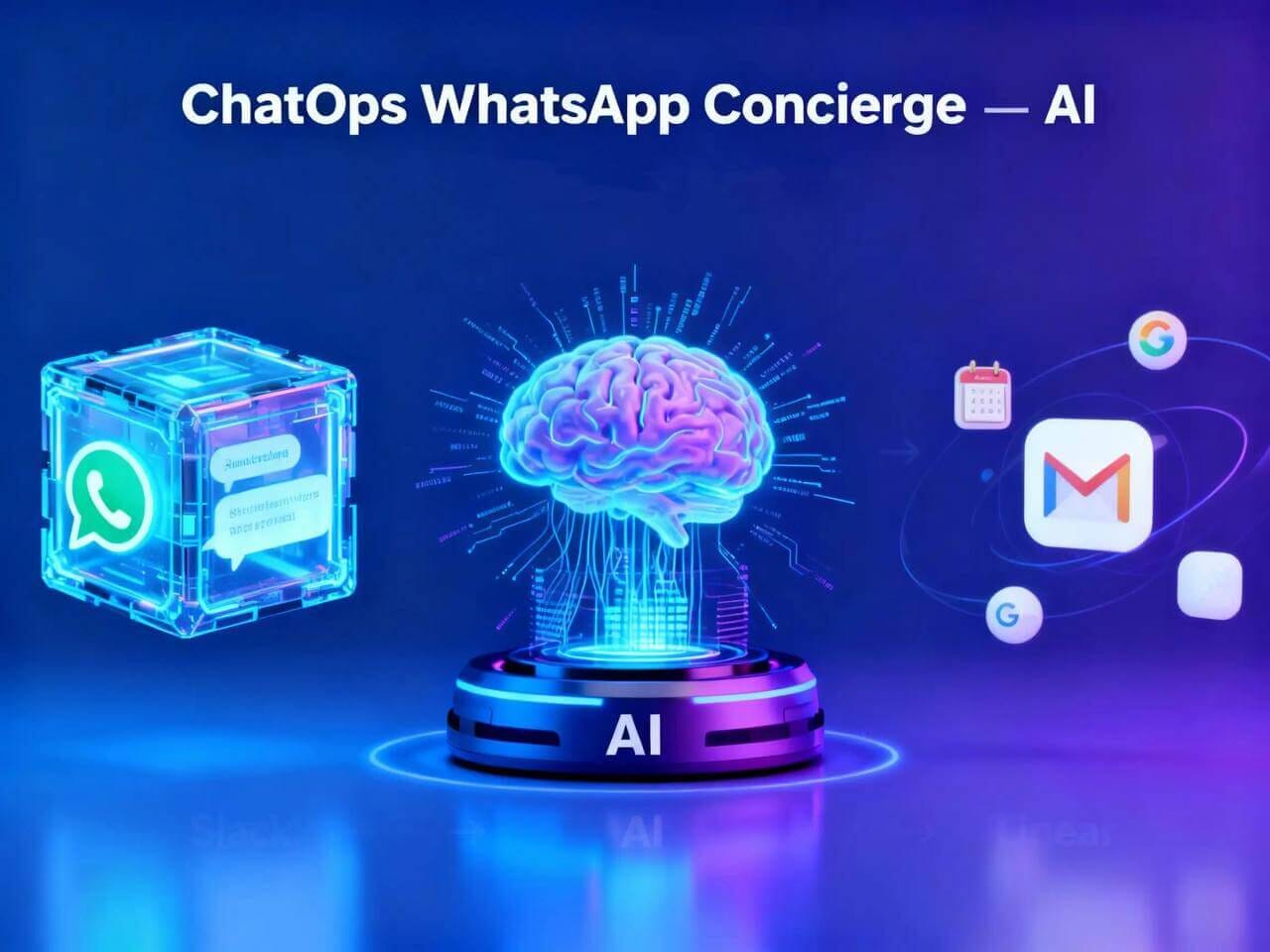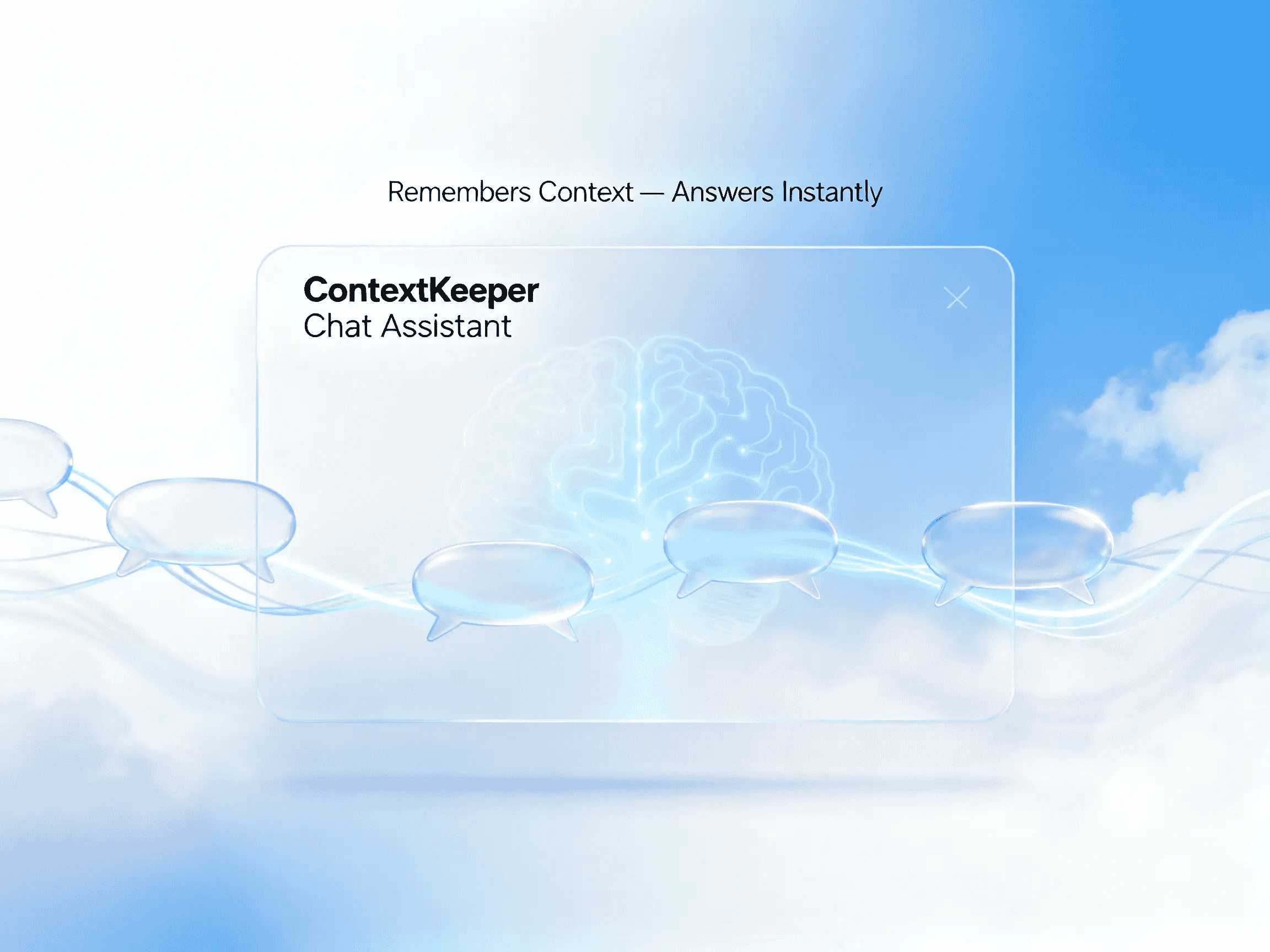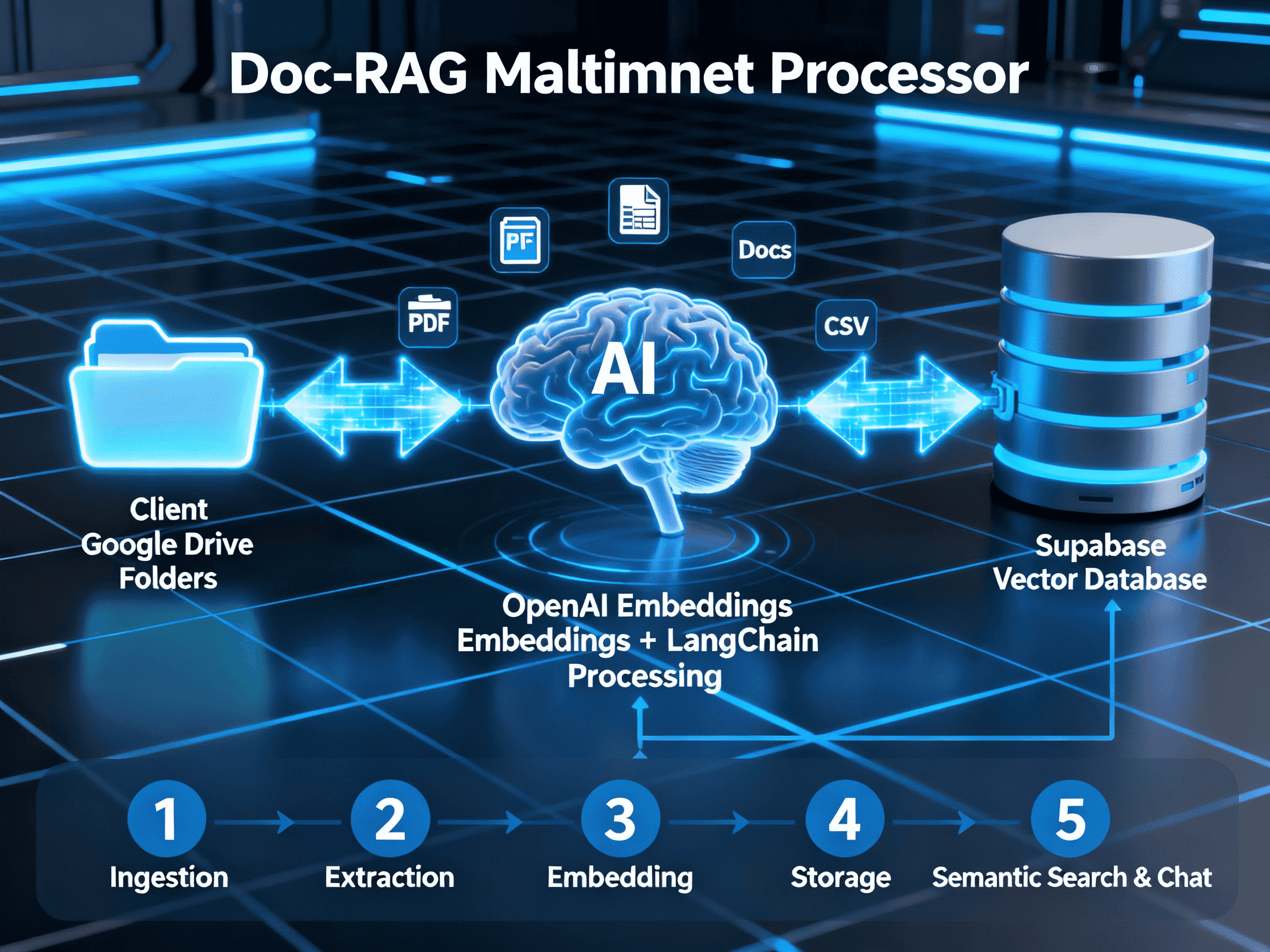
Doc-RAG MultiTenant Processor
Automates secure, per-client RAG document processing and search
Trusted by
Built with OpenAI, Supabase pgvector, and LangChain—industry-trusted technologies used in thousands of enterprise RAG deployments.
Success Story
Great American Insurance achieved 5× faster submission processing and 90% shorter review cycles using a comparable AI document-processing pipeline.
Integrates with
Problem
Businesses offering document-based insights struggle to manage multiple clients’ data securely. Building a retrieval-augmented generation (RAG) pipeline that keeps each client’s data isolated, continuously updated, and instantly searchable requires complex engineering and infrastructure management.
Solution
Doc- RAG MultiTenant Processor provides an end-to-end automated pipeline that handles ingestion, cleaning, and vectorization of documents per client. It automatically creates client-specific vector databases, processes all document types, and maintains real-time updates between cloud storage and the vector store. Each tenant’s data remains completely isolated, ensuring security and compliance while enabling semantic search, contextual QA, and AI-powered retrieval over their documents.
Result
Businesses can deploy per-client RAG environments in hours instead of weeks. Data ingestion latency is reduced from hours to minutes, and search responses remain under 200 ms with high semantic accuracy.
Use Cases
Doc-RAG MultiTenant Processor automates the entire lifecycle of client document ingestion, processing, and retrieval. It continuously monitors designated client folders in Google Drive, extracts and processes files in multiple formats (PDF, Google Docs, Excel, CSV), generates semantic embeddings using OpenAI models, and stores them in client-isolated vector tables in Supabase. This architecture ensures complete tenant data separation, real-time updates, and instant readiness for semantic search or chat-based document retrieval. By automating ingestion and embedding, organizations can provide their clients with personalized, secure RAG environments in minutes rather than weeks. This solution eliminates manual data preparation, schema management, and index maintenance while maintaining strict data isolation and compliance.
Integrations
Connect to your existing tools seamlessly
Technology Stack
Automation
Automation
Infrastructure
Implementation Timeline
Platform & Infrastructure Setup
5–7 daysSupabase account configuration, database creation with pgvector extension, API key setup, and initial connection to OpenAI embeddings. Google Drive folder monitoring is activated for each client, and secure credential storage is tested.
Pipeline Configuration & Automation
10–14 daysWorkflow nodes configured for document ingestion, file-type routing, text extraction, and embedding generation. Client-specific table automation is implemented, and data isolation between tenants is validated. Integration of LangChain components for text splitting, metadata tagging, and vector insertion into Supabase.
esting, Optimization & Launch
5–7 daysEnd- to-end validation of document ingestion, embedding accuracy, and vector search response times. Latency optimization for semantic queries, monitoring setup, and client onboarding documentation. Rollout to production with sample tenant environments.
Support Included
Complete setup documentation, node configuration templates, and API integration guides for Supabase, OpenAI, and Google Drive. Includes troubleshooting checklist, performance tuning guidelines, and optional consulting support for enterprise deployment.
